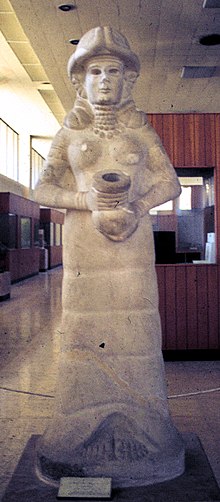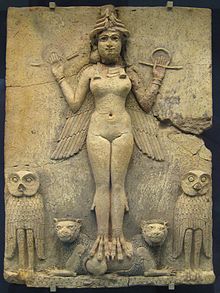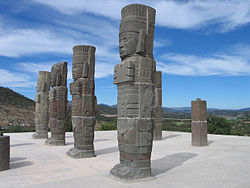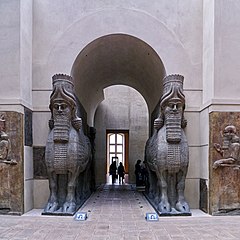A New Friend
Petra's new friend, with his entourage,
Waited on the dock of Harbor,
Beneath Volcano Never,
While Black Ship Liz,
Returned from the Pinnacle Race,
Anchored.
DolphinWords
Notes: 8th in series, see previous...Giants over the Dodgers 4-2...at one time or another I've rooted for every team in California...and while so, they have all gone to the World Series!...San Diego has yet to win the Series...I rooted for them when I lived near them...home teams...just why Angel Stadium is filled up with raucous Yankee fans, Red Sox fans, I dunno...folk in Town are kind of layed back...anyway, Angels and Yankees about to begin...
I found a really nice clip of Persepolis reconstructed by the LACMA...Los Angeles County Museum of Art...and they have one of the Persian Warriors with the distinctive cylinder headdress on a limestone fragment...what is limestone?...brb...hmmph...hard to imagine all the marine organisms over time making limestone!...Persepolis is limestone...the entire Yucatan Peninsula is limestone...easy to carve and use for buildings...brb...

Head of Royal Guard from Persepolis--LACMA
and on youtube Penn University has a clip of a lecture about Tula and Chichen Itza, how they resemble one another, unique among all the Mesoamerican ruins...both have Temples of the Warriors that look just alike...narrator has it Chichen Itza imported the style of Tula, out of admiration...other idea is that Chichen Itza was invaded by the Itza who were from Tula...it's an odd muddle...narrator too mentions the 'drum' feather headdresses...and the butterfly breastplates, 'pectorals'...I've found more of those, and the ones upside down on headdresses...and the bar pectoral too...and those upside down on headdresses...thought is both of these are stylized eagle claws...brb...

from Kahn Academy
https://www.khanacademy.org/humanities/art-americas/early-cultures/maya/a/jade-plaque-of-a-maya-king
I'm having a hard time finding again the youtube clip about Tula and Chichen Itza...this is what it was called: Dr. Simon Martin speaks about "Chichen Itza: An Alien City in the Maya Lowlands"...brb...found it...I'd left a comment!
the "drum major" feathered headdress is on the Tula Warriors, the Chacmools, and, a reach☺, Assyrian Winged Bulls-Limasuu, and the winged bulls and warriors at Persepolis, Iran. Persepolis looks to be another place with "international" architecture. The meteor crater is a nice reach! Tale needs something about the subterranean caves and such.
unquote...chortle...wish I'd gone to game...would have liked to see CC pitch, even though a Yankee!...0-0 so far, like 3rd...Kinsler with dbl...Trout up...Upton comes up, 4 for forty, and...grounds out...Upton, Calhoun, Cozart...need to step up their hitting!
the meteor that 'extinct' the dinosaurs shattered the limestone of the Yucatan, and the cenotes now show a crescent pattern--the edge of the crater...brb...
quote
A very dense and hard stone, jadeite has striking acoustical qualities, particularly when the surface is highly polished. In replicative research, I have found that a set of three jadeite belt celts emits high and sharp clinking sounds, something that must have especially impressive to the non-metal-using Classic Mayas.
unquote
looking for the bar pectoral took me there...Epigraphs!...brb...oh...Yanks picked up 2...Angels up...
quote (same as above)
The serpent heads and gods at the ends of ceremonial bars portray supernatural beings breathed and conjured into existence.
unquote
author goes on a lot about earspools...like out of the bars, things come out of the spools...the Mayan ball court rings are earspools!!!...my observation!:)
more quote
At Teotihuacan, one structure in particular appears to evoke the concept of och b'ih and the celestial ascent of the soul. Constructed near the beginning of the third century a.d., the Temple of Quetzalcoatl featured images of Quetzalcoatl, the rain-bringing god of wind, writhing through great rings rimmed with apparent feathers (Figure 21c). The serpents emerge from giant, three-dimensional flowers in the center of the rings, suggesting that they are breathlike emanations of the blossoms. Although I have identified the outer feathered rings as the rims of mirrors (Taube 1992a:197), it is quite possible that they are earspools, as there are examples with similar rims at Teotihuacan, including one with a four-petaled flower in the center (Figure 21b). Of course, the earspool identification would be very consistent with the breath serpent and floral earspool imagery noted for the Classic Maya. In addition, although there are portrayals of serpents emerging from mirrors in Postclassic Central Mexico (Taube 1992a:Figure 21e), serpents also pass through earspools, including the explicit Aztec portrayal of Quetzalcoatl exiting from such a device (Figure 19b).
unquote
well, I'm going beyond 'scholarly quote'...movie fans know all about 'portals' from movieStargate...what was that movie I just saw...'Arrival'...the odd alien ship floated over the ground and lifted one up into a tube where gravity was negated...and then in a room was like a mirror looking liquid wall behind which were the aliens...Valerian:City of a Thousand Planets had this wall too...it's a motif made with a popular special effect software...part of movies clip art book..and in many movies...Trout up...bottom of six...still down 2...that link is enough for those quotes, but I can't find the author's name...gathering what I have...the ear spools are related to the bars in that things, breath, serpents, wind, ?, pass through them...Upton a dink hit...Pujols up...brb...dink hit by Pujols...runners at the corners..2996 hits for Pujols...came home with his giveaway-night doll...base has a counter for his hits!...wild pitch...Upton scores...
quote
These ballcourts vary considerably in size, but all have long narrow alleys with slanted side-walls against which the balls could bounce.
unquote
and one ring on each wall in the center...now, in the Penn clip, the narrator shows the huge ball court at Chichen Itza...another like it at Tula...and just those two spots so huge...but many more else ware, and shows the rings thirty feet up or so...'too high to be realistic'...impossible to bounce the ball through it...'it's a temple'...stylized as a ball court...well, the ball court is a stylized 'bar', the rings, ear spools...a kind of wonderful notion...the players are the 'wind', 'breath' 'serpent' going through the spools/bar...maybe a spine shiver or two!...excitement...on the wall of that court are reliefs of really brutal sacrifices and such...why oh why is all this altruistic ritualizing couched in human sacrifice and torments?...bottom of 7th Angels 1 Yanks 2...oh, the spools are called plugs too...Mayans stretched their ear lobs like the Easter Islanders...brb...
quote
Although there are definite differences, it is interesting to observe a few similarities between these monuments. Both are placed in an elevated area (the warrior figures are placed on top of a pyramidal base, whereas the Moai figures are placed on platforms.1 Decorative headdresses were originally found in both groups as well. The warriors wear feather headdresses and the Moai figures would have originally worn red tufa headdresses (read an interesting article about the how these red hats may have been rolled down an ancient volcano).
unquote
don't know why, but I always get the feeling. reading about Easter Island. it is the last place 'they' were!...
quote
‘70 per cent of the island was transformed into open gardens and agriculture using a sophisticated stone mulching system to conserve moisture - we are mapping these plantation areas as part of our landscape survey.
Read more: http://www.dailymail.co.uk/sciencetech/article-1211673/Easter-Island-hat-mystery-solved-British-archaeologists.html#ixzz5E7ToUW9q
Follow us: @MailOnline on Twitter | DailyMail on Facebook
quote
‘70 per cent of the island was transformed into open gardens and agriculture using a sophisticated stone mulching system to conserve moisture - we are mapping these plantation areas as part of our landscape survey.
Read more: http://www.dailymail.co.uk/sciencetech/article-1211673/Easter-Island-hat-mystery-solved-British-archaeologists.html#ixzz5E7ToUW9q
Follow us: @MailOnline on Twitter | DailyMail on Facebook
unquote
was looking at the Easter Island statue's hats...and found that...how the Maya irrigated is a curio...and Khmer...and Inca...
Simmons two out single...Trout at second...Cozart up...K...top of 9th..bottom...Yanks have struck out thirteen times...Angels up...will Ohtani hit?
Some romantic dreamers imagine Easter Island is a pinnacle of a sunken lost continent, the last resort of its inhabitants.
Hats are called 'pukaos' topknots...A pinnacle near the island called 'Pukao', but can't find it!
count 0-2, two outs, runner on second...Kinsler...another foul...fastball 101 mph...Young steals second...K...'and that's how the ballgame will end'...
:(
DavidDavid






















